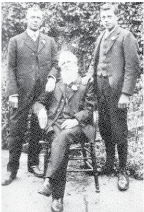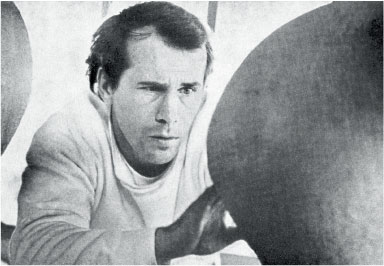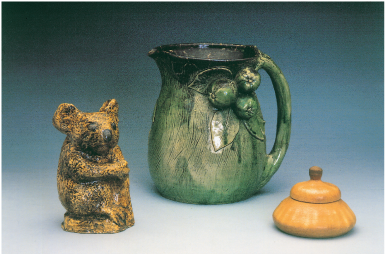‘Gerry Wedd, Kitschen (sic) Man’ published in the Journal of Australian ceramics Vol 56 # 3, 2017
November 1, 2017Writing,Journal of Australian CeramicsJournal of Australian Ceramics
JamFactory ICON - Gerry Wedd ‘Kitschen Man’ – review of the 2016 touring exhibition. Awarding the 2016 Nobel Prize for Literature to Bob Dylan was always going to be controversial, but things really ramped up given his tardiness in formally accepting the award. He did eventually fulfil his obligations by having the banquet speech delivered on his behalf by the US ambassador to Sweden, and then by…
‘Liz Williams – the Figure in Clay’ in Body Language published by Wakefield Press 2017
September 22, 2017WritingWakefield Press,Liz Williams
Liz Williams: the figure in clay This is an edited version of an article originally published in Ceramics, Art and Perception, issue 73 in 2008 The history of figurative sculpture in ceramics is marked both by its antiquity and the inherent limitations of the material. Clay has always had the advantage of being malleable, abundant and virtually free, but it also has distinct drawbacks when used…
Exhibition Review
Already seen in Vietnam and scheduled to be exhibited in Singapore from 19 April to 7 May 2007, Stephen Bowers, the curator of A Secret History of Blue and White, contrasts work from five Australian ceramic artists — Stephen Benwell, Robin Best, Bronwyn Kemp, Vipoo Srivalasa and Gerry Wedd — with that great body of objects, spanning time and cultures, which constitute the legacy of blue and white…
‘Ansate’ published in ‘Garland’ magazine, 2016
Ansate: Having a handle or a part resembling a handle. Sorry. I’ve begun this essay with a definition of an obscure word. Don’t you hate that? When Kevin Murray and I were having a coffee during his visit to Adelaide in December of 2015, he was musing (as only Kevin can) about the presence or absence of handles on ceramics. We talked a little about their history, their use, their cultural…
Susan Frost
November 1, 2015Writing,Journal of Australian CeramicsJournal of Australian Ceramics,Susan Frost
In her memoir Taken from the Back Row, Cosmopolitan.com editor Amy Odell describes being interviewed for a position as a fashion writer by the somewhat terrifying personage of Vogue's legendary editor, Anna Wintour. Searching around for tips, Odell was informed that Wintour was 'all about colour', and so whatever she did she should avoid wearing black. In the end she chose to wear a cream dress…
Simple Virtues ‘The Art of Function, the Function of Art’
April 1, 2015Writing,Journal of Australian CeramicsJournal of Australian Ceramics
In the early 2000s I was coming to the end of a curatorial project which involved chaperoning an international touring exhibition of contemporary Indonesian art around Australia. I had spent the last few years going to and from Indonesia, initially on an Asialink residency, researching, raising funds, and generally just doing whatever it took to get 'AWAS! Contemporary Art from Indonesia' seen by…
Some comments on the work of Gwyn Hanssen Pigott
September 15, 2013Writing,SpeechGwyn Hanssen Pigott
An address given at the Art Gallery of South Australia on the 15th of September 2013. It seems that we have lost some wonderful women from the ceramics world of late. So much of the early history of ceramics as part of the craft movement in Australia is about women — as makers but also as editors and gallery owners and teachers and organisers. The blokes often got the lions share of attention,…
Filthy Lucre: how money has helped to shape Australian ceramics over the past half century
April 1, 2012Writing,Journal of Australian CeramicsJournal of Australian Ceramics
“The best things in life are free But you can keep them for the birds and bees Now gimme money (that’s what I want) ”— Money (that’s what I want), Gordy/Bradford 1959 Nostalgia can be comforting, but it’s all too easy to wallow in a past that was really more like the present than one likes to think. The Gordy/Bradford song was playing around the time Pottery in Australia was first published in…
Gwyn Hanssen Pigott
April 1, 2012Writing,Journal of Australian CeramicsJournal of Australian Ceramics
“Instead, the things ... seep deliberately into one’s attention. They start vaguely, as little more than silhouettes, a vibration of one low colour against another. Gradually they ‘develop’ on the eye, and one begins to grasp their internal relationships: how articulate the subtle sequence of tones may be, in a form that once looked flat and brown; how many colours may be contained, as dusty…
Vale – David Boyd 1924 -2011
April 1, 2012Writing,Journal of Australian CeramicsJournal of Australian Ceramics
David Fielding Gough Boyd was the fourth child of the famous Australian ceramicist (William) Merric Boyd and Doris (nee Gough) Boyd. He grew up in the family enclave known as Open Country, in the suburb of Murrumbeena, which was (then) on the outskirts of Melbourne. His childhood was unconventional, bohemian and artistically rich.
A Potter’s Tale
November 1, 2011WritingJournal of Australian Ceramics
Everybody has a story to tell and potters are no exception. Before the days of tweets and blogs, telling that story to a wider audience meant going into print. In most cases this meant writing an article for a ceramics magazine, but some potters managed to go one better than this and have a book published. These books mostly concentrated on aspects of materials or technique, but occasionally a…
Another Still Life
July 1, 2011WritingCraft Arts International
In 1997, together with Suzi Attiwill, I curated an exhibition held at West Space Gallery in Melbourne. The purpose of the exhibition, Curated, was to examine what curators did, as what curators were doing seemed to be gaining ever greater prominence in the art world, at times even eclipsing the role of the artist. This was especially noticeable in the contemporary arts but was also being seen in…
Vale – Shiga Shigeo 1928-2011
April 1, 2011Writing,Journal of Australian CeramicsJournal of Australian Ceramics
With the passing of Shiga Shigeo, Australian ceramics has lost a great and long-standing friend.
There will be many tributes from those who knew him intimately, and these few words are simply to acknowledge the presence, and now the absence, of a Zen larrikin who found, at least for a time, a second home in Australia.
Vale – Paul Soldner 1921 – 2011
April 1, 2011Writing,Journal of Australian CeramicsJournal of Australian Ceramics
In early January 2011, Paul Soldner, one of the greats of American ceramics, passed away at his home in Claremont, California. He was eighty- nine. Born in 1921 into a family of Midwest Mennonite Christians, Soldner’s interest in art was sparked by his wartime experiences in the army medical corps, where, to quote Jori Finkel writing of Soldner in the Los Angeles Times, he saw ... “beauty…
Perspective
November 1, 2010Writing,Journal of Australian CeramicsJournal of Australian Ceramics
“I cross the room like a dancing architect A daddy waltz on the tops of my shoes ...”— Don’t Respond, She Can Tell from Interbabe Concern by Scott Miller/Loud Family, 1996 Alias Records Let’s face it – architects are cool. They wear good clothes, have distinctive taste in spectacles and build fabulous, titanium clad post-modernist cathedrals to art which rejuvenate entire cities. Even in the…
Bennetts Magill Pottery Pty Ltd – a living history
April 1, 2010Writing,Journal of Australian CeramicsJournal of Australian Ceramics
 Charles (Chas) Bennett (seated), William Charles Bennett (left) and William…
Charles (Chas) Bennett (seated), William Charles Bennett (left) and William…
And then came Funk
August 1, 2009WritingBibliophile
Introduction This is an essay about the introduction of funk ceramics into Australia and the affinity this work found in the social, artistic and political environment of Adelaide in the late 1960s and 1970s. For those not familiar with the term, funk ceramics describes sculptural work that combines a Pop Art sensibility with the history of ceramics as a decorative art. At its inception it could…
FREE RADICALS: the rhetoric of innovation in contemporary ceramics
July 20, 2009Writing,SpeechAustralian Ceramics Triennale
Speech given at the Australian Ceramics Triennale in Sydney on 20th July 2009. The title of this talk is taken from the chemical term for a molecule or atom in a highly reactive state. Free radical reactions are apparently quite common, with combustion being an example that is particularly useful to potters, but the mental picture one is likely to form on hearing the term probably has more to do…
 Alex Leckie’s invitation…
Alex Leckie’s invitation…